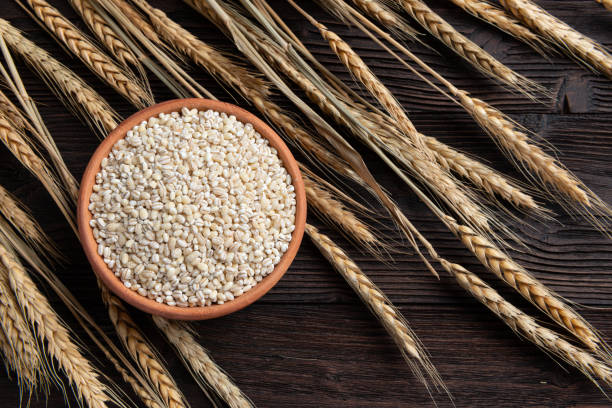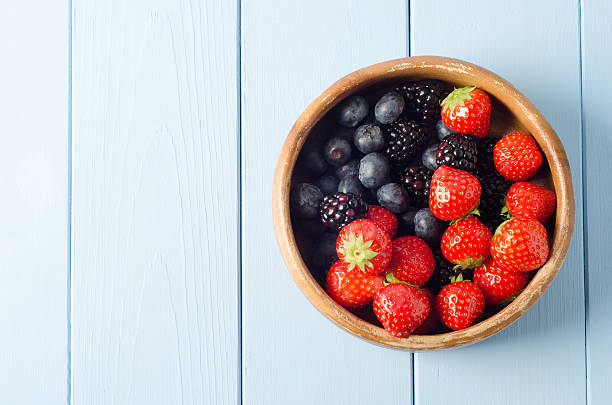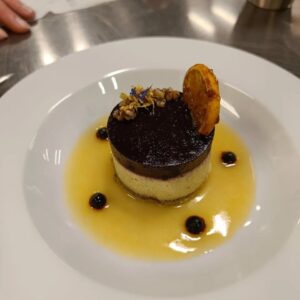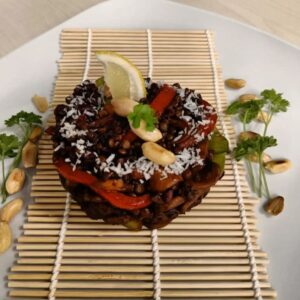Spring and summer foods should be lighter than what was being consumed in the deep of winter. Eat the main meal at lunch to slowly regain strength and energy. Barley, wheat-based pies, honey, grape wine and ginger tea or wine are recommended
Ayurvedic prescriptions for food are always based on the season in the location of the patient. Because the doshas cycle with time through the day, the year and the life cycle, any food-as-medicine prescription for any ailment must be tailored to several factors.
Unlike the modern medical treatment plan that is stagnant and often prescribed for life, such as a thyroid drug or statin or blood pressure medicine, Ayurveda advises changes every 2-3 months after assessment. A good prescription will specify changes in the daily routine, clothes, medicinal formulations, activity, as well as the foods.
As we move into spring and summer, the cold air and biting wind transform into cool breezes and warmer temperatures. The humidity is low but increasing. The heat lingers in the air as the midday temperatures create a heat that thaws the lakes and also increases the flow of heat around our body. This latent heat allows our skin pores to open a little, allowing more air to flow, and also allowing some of the heat to move out of the body. Understanding the weather, humidity and water helps us to understand digestion and oiliness required by the body.

In Ayurvedic terms, the late kapha season is marked by ice melting to water, in which phlegm that has been sludgy all winter begins to flow, both in the rivers and in our body. People with phlegm buildup in their head and sinuses will begin to experience runny nose, loose phlegm in the throat. Those with weaker immune systems may experience a buildup of skin fungus known as ringworm.
To counter this kapha and get it out of the system before the hot summer approaches, Ayurveda provides a host of remedies. If the kapha that has been accumulating in the tracts of the body does not get taken out, the residues of it will resorb back into the body, creating pockets of moisture and phlegm that were unneeded waste. Accumulation over time can cause kapha diseases of respiratory diseases, immunity, joint problems, head and neck phlegm such as sinusitis and pharyngitis, and gastric issues, because these are the houses where kapha resides.
Kitchen pharmacies are important for cleaning up the body before getting ready to eat. In the early morning daily routines known as dinacharya, go to the kitchen and add a little salt and turmeric to the water used for jalneti (nasal irrigation using a neti pot) to clean out the phlegm. Changing the toothpaste is important too. Experiencing taste is important, as it changes the composition of the saliva. Cinnamon can be used all throughout the year, as it is a sweet astringent that is favourable for the spring and summer, and its pungent heating qualities are favourable for autumn and winter. More sour and salty tastes are recommended for spring to pull out the kapha stuck in the oral cavity. Neem is the best of the bitters and is excellent for the late winter and spring seasons as it cuts kapha and lowers pitta. Khadira is advised for the kapha cold season, as it is an astringent, which dries the oily nature of kapha and also decreases kapha and pitta as it is composed of the cooling and drying elements of earth and air.

Just as the tastes evoke emotions, and emotions evoke chemical changes in the body that affect hormones, enzymes, and organ functions, so the use of tastes can be used medicinally to alter one's health in one's favor.... or to deleteriously affect it too! During the kapha season, eat locally produced foods, such as greens in soups, and berries and vegetables that crop up. Opt for hot soups that will melt the phlegm in the throat. Pungent, bitter and astringent tastes (rasa) in foods should be favored if you are trying to reduce kapha, both the phlegmy kapha in the body, as well as flabby fat. Light and dry foods are excellent for reducing phlegm, so have some dry fruits and nuts, popcorn, and crackers with dry cheese. Avoid cold foods and oily preparations during the spring to prevent oil buildup.
Foods should be lighter than what was being consumed in the deep of winter. If heavy foods are in your appetite, remember the law of virya - when the power of fire is high in the sky, the power of fire is high in the belly. Eat the main meal at lunch to slowly regain strength and energy. Barley, wheat-based pies, honey, grape wine and ginger tea or wine are recommended.
The appetite is slowing reducing too, so the food should be adjusted accordingly, depending also on the daily activity level, and the amount of exercise, dance, movement and sports that are now available as the weather gets warmer. Midday walks and outings are recommended. Romantic behavior is preferred in this season, so take a romp with your lover instead of a midday nap, then enjoy an early supper. Morning and evening walks at sunrise and sunset help adjust the clock genes of the body, reminding the internal organs that the days are getting longer, and changing the rhythms of the body's biochemical machinery.
Light and dry massages of the body and of the feet are advised by ancient Ayurvedic physicians, either an hour before food, or 3-4 hours after food.
The medicinal formulations to use will of course depend on the person and their constitution, lifestyle, work and imbalances. Use of triphala is excellent if there is a little constipation. Talisadi churna will remove throat phlegm buildup so that you do not swallow the phlegm and add to the work of the gut, which is trying to digest your food. Fresh ginger added to chai, or as a tisane - ginger tea! -- will improve the digestive fire.
Go to the kitchen and warm some mustard oil for a pre-bath massage to allow your skin to eat and to remove the dryness of winter, making the skin moist but not too moist and preventing fungus or bacterial buildup. Dried herbal powder scrubs known as ubtana made from your old spices will make the skin glow.
Ayurveda uses the logic of the qualities of the season, known as the gunas, to calculate recommendations for foods and activities. By trying what works for you, and altering your routines to avoid what makes you feel worse, a gradual increase in daily energy, with good appetite, no cravings, emotional happiness, smooth bowel movements, good sleep and good sex drive are the keys to self-assess whether you are following the right regimens for your body.


















